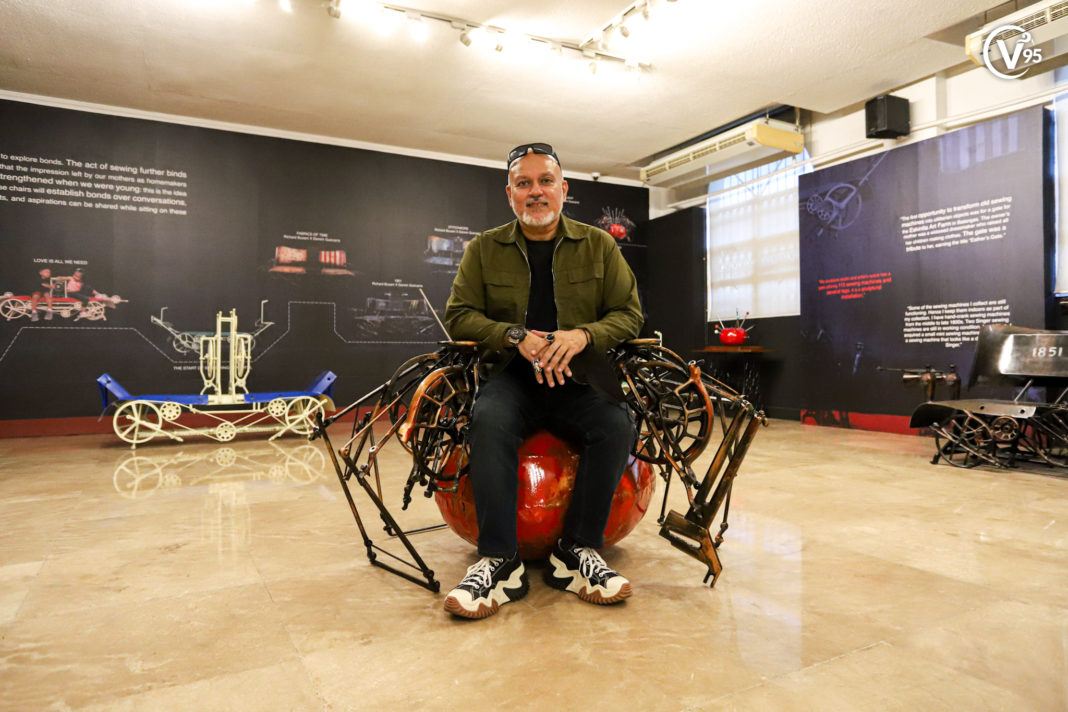MOTHERS and the act of sewing took center stage in a Thomasian sculptor’s exhibit that repurposed old sewing machines into chairs and explored the bonds created by mothers.
Instead of featuring his usual samurai warriors sculptures, architecture alumnus Richard Buxani tinkered with junked sewing machines in his latest exhibit titled “Mak-Ina,” a portmanteau of the Filipino words makina (machine) and ina (mother), to pay tribute to mothers who sewed to support or care for their families.
“My parents are in the garments business, and my mom knows how to sew. I also saw my Lola sewing. So, every time I see yung sewing machine, naaalala ko sila. That’s why I decided to do this show, as a tribute to them,” Buxani told the Varsitarian.
Buxani collected 115 sewing machines over the past 10 years to turn them into utilitarian art.
The result: nine sculptures exhibited at the National Commission for Culture and the Arts (NCCA) Gallery in Intramuros, Manila, in time for the National Arts Month celebration.
“Matagal naman nang naglalaro sa isip ko ‘to,” Buxani explained. “Kaya lang, sometimes what you usually present is what you are known for, but in national-level shows like this, we present something that is extraordinary and out of our comfort zone.”
The first piece in the “Mak-Ina” exhibit was named “The Start of Something Beautiful” since all the other works were derived from it, Buxani said.
The mint-green repurposed sewing machine can be used as a bench for two to three people like the other pieces in the collection.
At the center of the exhibit is “Arachnid,” a huge spider-like chair that features a pin cushion with gagambas or the foot of the sewing machines attached to it.
With “Drive,” Buxani recalled how he usually played under the sewing machine and used its wheel as a steering wheel.
“Ni-reinterpret ko lang ‘yung upuan, which is a very specific way of bonding dahil upuan siya. Nilagay lang namin sa taas ‘yung steering wheel kaya ang title niya, ‘Drive.’’’
A pair in the collection, “All Ears” and “Dreaming of Flight,” was made by Buxani in collaboration with Darwin Guevarra.
The former is the female version, while the latter is more masculine and was inspired by military jeeps.
The other works presented in the exhibit included “Love is All We Need” and Buxani’s other collaborative works with Guevarra titled “Fabrics of Time,” “1851,” and Stitchwork.”
UST painting alumnus Abe Orobia curated the exhibit. The works may be viewed at the NCCA Gallery until Feb. 28. with reports from Matthew G. Gabriel














